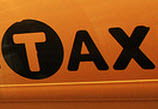Tips For Those Filing Their Taxes At The Buzzer
If you’re going all Duke-Butler with your income taxes this year, Kiplinger’s Mary Beth Franklin has some tips you might find helpful. Here they are, posted with permission:
* Take the DIY route: Last year, more than 31 million Americans filed their tax returns from their home computers, up nearly 20% from the previous year. If your income is $57,000 or less — which accounts for about 70% of all taxpayers — you qualify to use free tax-preparation and filing software at http://www.irs.gov/freefile. If your tax situation is simple, try tax-preparation software, such as TurboTax, TaxAct and a variety of other programs, is easy to use. Just answer the interview-style questions about your income and expenses, and the programs will populate the appropriate tax forms with your answers and do all the math.
* Hit the snooze button: If your tax situation is more complicated and you don’t have a tax pro lined up already, it’s probably too late to find one in time to meet the April 15 deadline. So do yourself a favor and file Form 4868, “Application for Automatic Extension of Time to File U.S. Individual Income Tax Return.” You can request the extension online, by phone or by mail.
An extension will delay the due date for your completed return until October 15, 2010 — but it doesn’t delay the deadline for your payment. Estimate what you owe, and send it to the IRS along with your request for an extension.
* No tax due, no penalty: Refunds have been averaging nearly $3,000 so far this tax-filing season, up 10% from last year. So, if you don’t owe additional tax with your return, you can probably ignore the April 15 deadline. The penalty for missing the deadline is a percentage of the tax owed with the return, so if you owe nothing, there’s no penalty. But if you’re in this boat, you should file as soon as possible to retrieve your refund.
* Take advantage of last-minute savings: If you’re still looking for ways to cut your 2009 tax bill in the waning days of the tax-filing season, consider funding a traditional IRA if you are eligible for a tax-deductible contribution. You can contribute up to $5,000 ($6,000 if you were 50 or older by December 31, 2009). For single filers who don’t participate in a workplace-based retirement plan, there’s no income limit for deducting contributions to a traditional IRA. For married couples filing jointly, the phaseout for an IRA deduction begins at $89,000 if both spouses participate in a retirement plan at work.
If you have any more how-tos, add them to the ledger.
Last-Minute Tax-Filing Tips [Kiplinger]
(Thanks, Alison!)
Want more consumer news? Visit our parent organization, Consumer Reports, for the latest on scams, recalls, and other consumer issues.


